Disclosure: This article contains affiliate links. We may earn a commission from purchases at no extra cost to you, which helps our travel content.
The first time I heard the ice of Lake Baikal sing beneath my feet, I understood why Siberians speak of this place with such reverence. Baikal não é apenas um lago, é um oceano congelado de histórias — Baikal isn't just a lake, it's a frozen ocean of stories. After years of photographing Japan's winter landscapes, I found myself drawn to this ancient Siberian lake—the deepest and oldest in the world—where winter transforms its surface into a photographer's paradise of transparent blue ice, methane bubbles frozen in time, and crystalline formations that seem otherworldly. As someone who's navigated cultural boundaries all my life, there was something deeply appealing about visiting this place that sits at the crossroads of Russian and Buryat cultures, where shamanic traditions meet Orthodox Christianity against a backdrop of unparalleled natural beauty. This guide shares everything I learned during my week capturing the crystal cathedral of Lake Baikal's winter magic.
Planning Your Winter Expedition to Siberia's Blue Jewel
Lake Baikal in winter requires thoughtful preparation—this isn't your typical photography destination. The Siberian winter is unforgiving, with temperatures routinely dropping to -20°C (-4°F) and sometimes plunging to -30°C (-22°F) or lower. Yet these extreme conditions create the photographic magic that draws artists from around the world.
I based myself in Irkutsk, the gateway city to Lake Baikal, for one night before heading to the small village of Listvyanka for two nights and then to Olkhon Island for the remaining four days. This progression allowed me to acclimatize gradually while experiencing different facets of the lake.
Booking accommodations in advance is essential, as options are limited, especially on Olkhon Island. I stayed at a family-run guesthouse in Listvyanka that offered home-cooked Siberian meals (the owner's borscht became a welcome ritual after hours on the ice) and at Nikita's Homestead on Olkhon Island, where banya (Russian sauna) sessions soothed my cold-stiffened muscles each evening.
For transportation, I arranged a private driver through my accommodation in Irkutsk. While more expensive than public options, having a knowledgeable local driver proved invaluable when navigating ice roads and finding photographic locations off the tourist path. If you're comfortable with winter driving in extreme conditions, renting a 4WD vehicle is possible, but I wouldn't recommend it unless you have significant experience.
Perhaps most importantly, prepare for connectivity challenges. My Japanese mobile provider had spotty service at best, and Wi-Fi was unreliable outside Irkutsk. Download offline maps, translation apps, and any reference photos before arrival. I used the Garmin inReach Mini for emergency communication and location sharing with family—a worthwhile investment for remote travel that I've relied on across multiple continents.
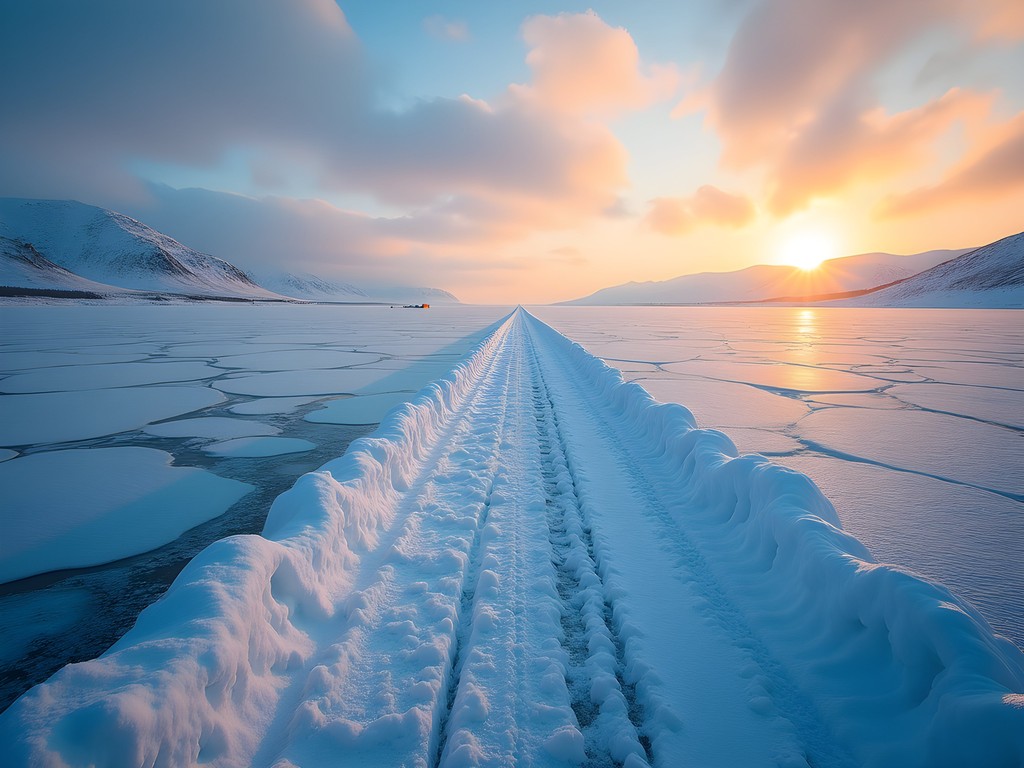
💡 Pro Tips
- Book accommodations at least 3-4 months in advance for winter visits
- Arrange transportation before arrival—options are limited and fill quickly
- Purchase a Russian SIM card in Irkutsk for better connectivity
- Learn basic Russian phrases—English is not widely spoken in smaller villages
Essential Gear for Subzero Photography
Photography in extreme cold demands specialized gear and techniques that I had to learn quickly despite my experience shooting in Japanese winters. Baikal's conditions are on another level entirely.
First and foremost: batteries. The cold will drain them faster than you can imagine. I carried six fully-charged batteries for my camera and kept them in inner pockets close to my body heat, rotating them as needed. My camera battery grip proved invaluable, allowing me to keep two batteries in the camera simultaneously, extending shooting time between changes.
For camera protection, I used neoprene covers when moving between locations and allowed my gear to acclimate slowly when transitioning between temperatures. The rapid temperature changes when moving from -25°C outdoors to heated rooms can cause condensation that damages electronics. I brought large ziplock bags to seal my camera before entering warm spaces, allowing it to warm gradually without direct contact with humid air.
My lens selection was deliberately minimal: a 16-35mm wide-angle zoom for ice landscapes, a 50mm prime for detail work, and a 70-200mm telephoto for compression shots across the lake. Each lens stayed in its own insulated bag with silica packets.
Tripod choice matters tremendously here. Carbon fiber is essential as metal becomes painfully cold to handle and can even cause skin damage. I wrapped the legs of my tripod with foam pipe insulation for easier handling and added rubber feet with retractable spikes for secure placement on ice.
Filters are crucial for managing the extreme contrast between ice, snow, and sky. I relied heavily on graduated ND filters and a circular polarizer to control reflections on the ice surface. Keep these in warm pockets until needed, as cold glass fogs instantly when exposed to breath.
Finally, don't underestimate the importance of appropriate clothing. Photography requires fine motor skills that become impossible with numb fingers. I used thin liner gloves under photographer-specific fingerless mittens that allow quick access to camera controls while maintaining warmth. Multiple layers, a windproof outer shell, insulated boots rated to at least -30°C, and a balaclava to protect your face from wind are non-negotiable essentials.
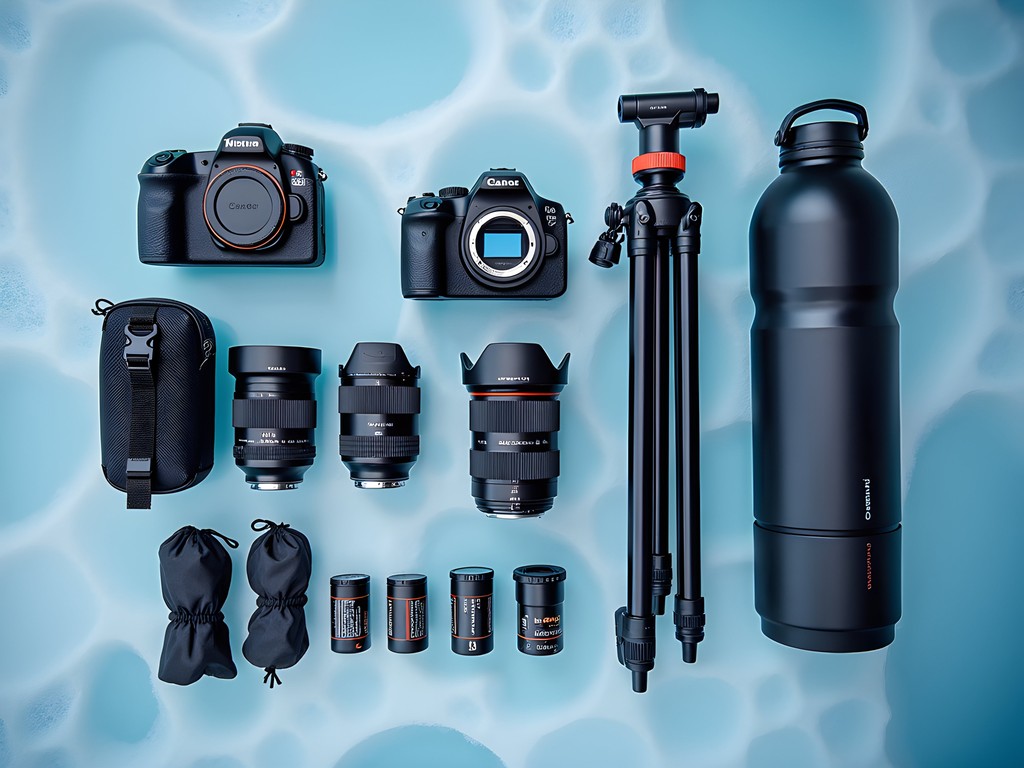
💡 Pro Tips
- Keep spare batteries against your body in inner pockets
- Always carry lens cleaning cloths in warm pockets to prevent them freezing
- Use manual focus when possible—autofocus mechanisms can struggle in extreme cold
- Bring hand warmers to revive numb fingers and to warm gear in emergencies
Finding and Photographing Baikal's Legendary Blue Ice
The hunt for perfect blue ice became my obsession during my week at Baikal. This isn't like photographing a static landmark—the ice conditions change daily, even hourly, as temperatures fluctuate and the sun moves across the sky.
The most photogenic ice typically forms in early to mid-February, when the freeze is complete but before heavy snowfall covers the surface. Local guides call this the period of black ice—when the lake freezes so clearly you can see meters down into its depths. It's both mesmerizing and disorienting to walk on what feels like glass suspended over an abyss.
My most productive shooting locations were the small sea caves near Listvyanka, the dramatic ice formations around Olkhon's Khoboy Cape, and the methane bubble fields near Uzury. Each required different approaches and techniques.
For cave ice, I arrived before sunrise to catch the first light illuminating the crystal formations from behind. Using my wide-angle lens at around f/11 for maximum depth of field, I bracketed exposures to capture both the dark cave interior and the bright ice illuminated by outside light. A tripod was essential here, as was patience—I often waited hours for the perfect light angle.
The methane bubbles—perhaps Baikal's most famous winter feature—required a different approach. These white circles and columns trapped in the ice are actually frozen methane gas released from the lake floor. Finding pristine examples meant venturing away from popular areas, often hiking 3-4km from the nearest access point. I found the best specimens early in the morning before other photographers and tourists arrived.
For these detail shots, I positioned my camera directly above the bubbles, using a 50mm lens to minimize distortion and a polarizing filter to cut glare from the ice surface. The challenge was lighting—direct sunlight created harsh reflections, while overcast conditions sometimes failed to bring out the depth. My solution was to shoot during the golden hour when low-angle light created subtle shadows that revealed the three-dimensional structure of the bubbles.
The expansive ice fields of Olkhon demanded panoramic approaches. Here, I often used my telephoto lens to compress the vast distances, making the jagged ice ridges appear to stack dramatically against distant shores. For scale, I occasionally asked my guide to stand far in the distance—a tiny human figure that emphasized the immensity of this frozen world.
Don't forget to look down and capture the incredible textures beneath your feet. Some of my most compelling images were abstract patterns of cracks and bubbles shot straight down with careful attention to composition and light.
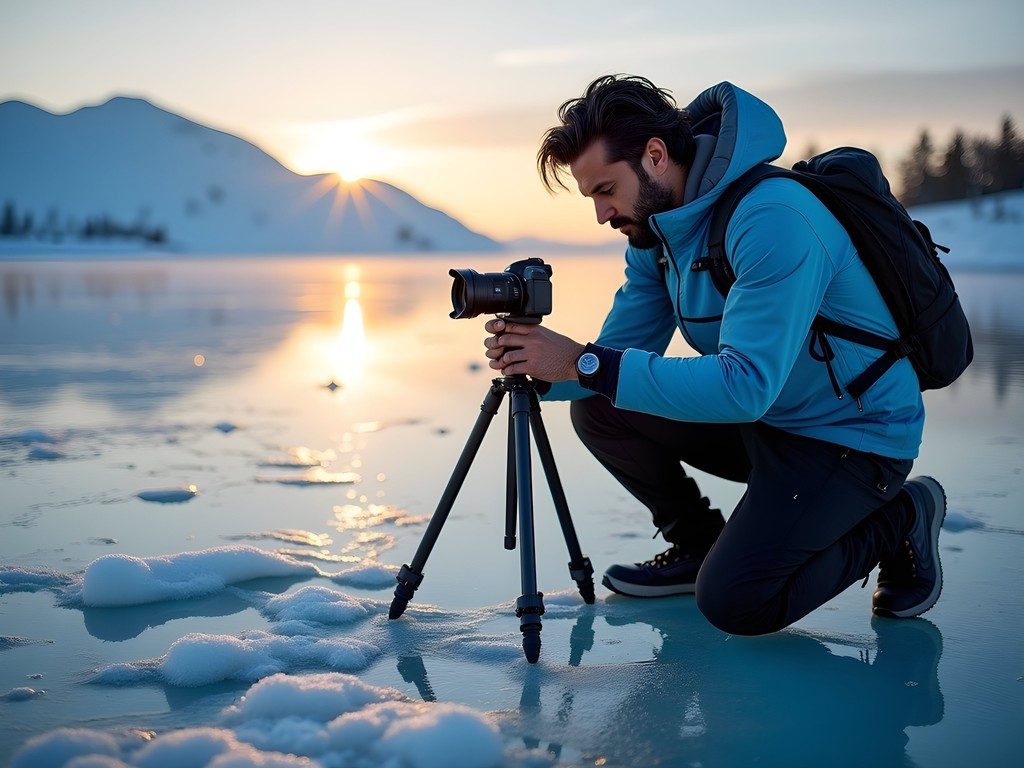
💡 Pro Tips
- Hire a local guide who knows safe ice conditions and hidden photographic locations
- Shoot during golden hours when low-angle light reveals texture in the ice
- Look for leading lines in ice cracks to create compositional depth
- Include human elements for scale in wide landscape shots
Navigating Local Culture and Building Connections
Photography is about more than technical skills and equipment—it's about understanding the cultural context of your subject. Lake Baikal sits at a fascinating cultural crossroads that enriched my visual storytelling immeasurably.
The indigenous Buryat people consider Baikal sacred, calling it the Dalai-Lama's cauldron in reference to its depth and spiritual significance. Throughout the lake region, you'll encounter serge (wooden poles) and colorful prayer flags marking sacred sites. Always ask permission before photographing these spiritual places, and never disturb prayer offerings.
I was fortunate to meet a Buryat family near Khuzhir on Olkhon Island who invited me to photograph their traditional winter fishing practices. This opportunity came only after several days of building rapport in the village—speaking my limited Russian, sharing photos of Japan on my tablet, and expressing genuine interest in their customs. The resulting images of ice fishing against the backdrop of shamanic prayer flags became some of my most meaningful work from the trip.
Russian banya culture is another essential experience that provides respite from the cold and opportunities to connect with locals. In the village bathhouses, conversations flow freely despite language barriers. One evening, a fellow banya-goer noticed my camera and, through a mix of broken English and gestures, told me about an ice cave only locals knew about. The next morning, I found myself photographing pristine ice formations that rarely appear on Instagram feeds.
Food also opens doors. I made it a practice to eat at small, family-run cafes rather than tourist restaurants. My willingness to try everything—from omul (Baikal's endemic whitefish) to buuzy (Buryat dumplings)—often led to conversations with cooks and owners who shared stories about the lake's changing ice patterns over generations.
Keep in mind that photography permits may be required in certain protected areas of Lake Baikal. The travel journal I carried became invaluable for noting contact information, permit requirements, and cultural insights shared by locals. I found that showing respect for regulations and customs not only kept me out of trouble but often resulted in locals pointing me toward photographic opportunities I would have otherwise missed.
Finally, consider bringing small prints of your home country as gifts. The photos of Osaka's cherry blossoms and São Paulo's vibrant streets that I shared created connections that transcended language barriers and often led to invitations and photography opportunities that money couldn't buy.

💡 Pro Tips
- Learn basic greetings and thank-you phrases in both Russian and Buryat
- Respect sacred sites and always ask before photographing religious ceremonies
- Bring small prints from your home country as conversation starters and gifts
- Participate in local traditions like banya visits to build connections
Post-Processing Techniques for Ice Photography
Back in my Osaka apartment, surrounded by familiar technology instead of Siberian ice, the real work of bringing Baikal's winter magic to life began. Post-processing ice photography presents unique challenges that require specialized techniques.
The first challenge is white balance. Ice can appear dramatically different depending on your white balance settings—from deep blue to stark white. Rather than seeking absolute accuracy, I approach white balance as a creative choice that conveys the emotional experience of being there. For morning shots, I typically push slightly toward blue (5200-5600K) to enhance the ethereal quality, while sunset images benefit from warmer tones (6000-6500K) that complement the golden light on ice crystals.
Exposure blending is essential for many Baikal scenes due to the extreme dynamic range between bright ice and dark water or caves. I routinely bracket 3-5 exposures, particularly for cave shots where the interior might be 5-6 stops darker than the bright ice entrance. When blending in post, I focus on creating natural transitions rather than the overly processed HDR look that has become cliché in landscape photography.
For ice detail shots, contrast adjustments are critical. The editing software tools I rely on most are the Clarity slider (used subtly at 15-25%), the Dehaze tool for bringing out ice textures, and local adjustment brushes to enhance the three-dimensional quality of methane bubbles and cracks. The key is selective application—global adjustments quickly destroy the delicate nature of ice photography.
Color work requires a delicate touch. While it's tempting to push the blues to create that otherworldly look seen in many Baikal photos, I prefer a more restrained approach. I selectively enhance the natural blue in shadow areas using HSL adjustments while maintaining neutral highlights. This creates depth while preserving realism.
For the abstract ice patterns, I often convert to black and white to focus attention on texture and form. The Silver Efex Pro plugin offers excellent control for these conversions, allowing me to emphasize the graphic qualities of ice cracks while maintaining subtle tonal gradations.
Finally, I've developed a custom sharpening technique for ice details: I create a luminosity mask that targets only the mid-tones (avoiding over-sharpening in highlights or shadows), then apply high-radius, low-amount sharpening to enhance edge contrast without creating artifacts. This brings out the crystalline quality of the ice without the artificial look that comes from excessive sharpening.
Remember that post-processing should enhance, not create. The most compelling ice images begin with strong in-camera technique—no amount of editing can save a poorly exposed or composed photograph of Baikal's ice.

💡 Pro Tips
- Create a custom camera profile specifically calibrated for ice photography
- Use luminosity masks for targeted adjustments that preserve ice textures
- Keep a reference image open while editing to maintain realistic ice colors
- Consider creating black and white conversions for abstract ice pattern shots
Final Thoughts
As I look at the images captured during my week at Lake Baikal, I'm struck by how this ancient body of water connects seemingly disparate elements of my own identity. The technical precision required to capture its ice speaks to the engineer in me, while the cultural tapestry surrounding it resonates with my lifelong experience bridging different worlds. Yeh paani ki kahani hai — this is the story of water, as my father would say in Hindi, frozen into a moment of perfect crystalline beauty.
Lake Baikal demands much from photographers who seek its winter treasures—technical skill, physical endurance, cultural sensitivity, and creative vision. Yet it rewards these efforts with images unlike any others on Earth. If you make this journey, go with respect, patience, and openness. The ice will speak to you in its ancient voice, if you're willing to listen.
I'd love to see your own Baikal images or answer questions about photographing this remarkable place. Connect with me on Instagram or leave a comment below. Até a próxima aventura — until the next adventure!
✨ Key Takeaways
- Winter photography at Lake Baikal requires specialized gear and techniques for extreme cold
- The most photogenic ice typically forms in early to mid-February before heavy snowfall
- Building connections with locals can lead to unique photographic opportunities
- Post-processing ice photography requires a delicate touch to maintain realism while enhancing the natural beauty
📋 Practical Information
Best Time to Visit
Late January through mid-March, with February offering optimal ice conditions
Budget Estimate
$1,500-2,500 USD for a week (excluding international flights)
Recommended Duration
7-10 days minimum
Difficulty Level
Challenging

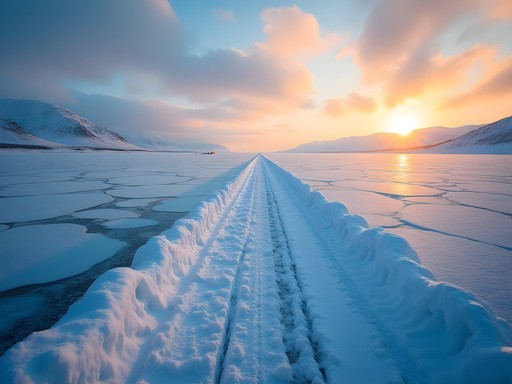
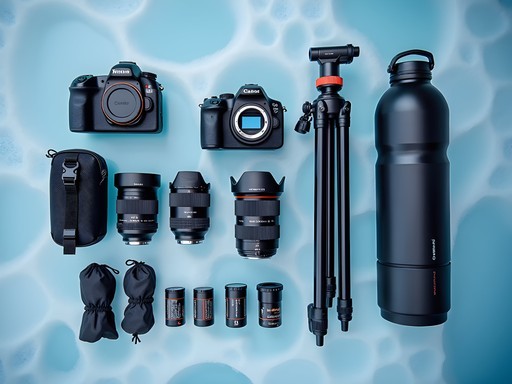


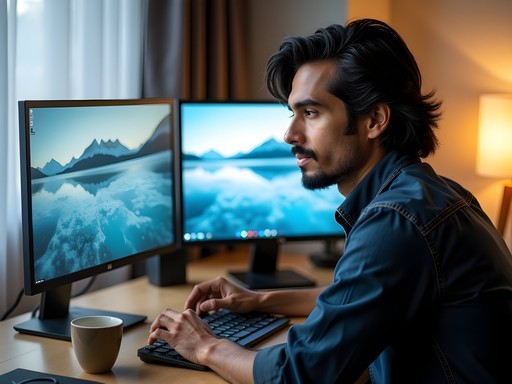



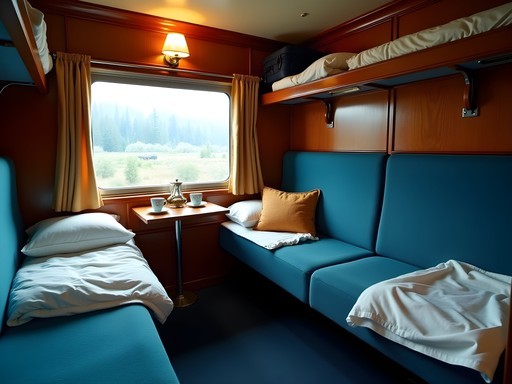






Comments
travelace
How did you get around the lake? Did you hire a driver or is there decent public transportation? Those ice caves look amazing but seem hard to find on your own.
Marco Sharma
I hired a local guide/driver named Mikhail through my guesthouse in Khuzhir. Definitely recommend this approach - he knew exactly when and where to go for the best light, plus all the safe ice routes. There are marshrutkas (public minibuses) between main towns, but for photography, you need flexibility that public transport can't provide.
beachchamp
Can confirm - a local guide is essential. Ours showed us ice caves that weren't on any map. Worth every ruble!
beachchamp
Just got back from Baikal last month and your guide would've been SO helpful! We stayed with a local family in Listvyanka who took us ice fishing. Watching them cut holes with those massive ice saws was incredible. The homestay experience made all the difference - our host Natasha made us try omul fish prepared three different ways and kept our glasses filled with samogon (homemade vodka). Word of warning though: the roads from Irkutsk can be treacherous in winter. Our driver was amazing but I was white-knuckling it the whole way!
wildguy6788
Great guide! How did you handle the extreme cold for your camera equipment? Planning a trip for next February and worried about my gear freezing up.
Marco Sharma
The key is gradual temperature changes. Never bring cold gear directly into a warm room - I used a large ziplock bag to let it warm up slowly. And my camera hand warmer was a lifesaver for keeping batteries functional. Most important: bring 3x more batteries than you think you'll need!
Bryce Diaz
Marco, this brings back memories! I visited Baikal two winters ago and that ice symphony you described - that crackling, groaning sound - still gives me chills thinking about it. One tip for anyone planning to go: the locals taught me to pour hot water on my tripod legs before packing up. Otherwise, your fingers will freeze to the metal when you try to collapse it later! Also found that keeping spare batteries in a pocket against your body is absolutely essential. My camera died within 10 minutes when I first arrived until I figured out the battery trick. The Olkhon Island shamanic sites were particularly magical at sunrise.
wildguy6788
That tripod tip is gold! How many days would you recommend staying to get the good shots?
Bryce Diaz
I'd say minimum 5 days, ideally a week. The weather changes dramatically and you want flexibility to wait for the perfect conditions. Plus, getting to some spots takes time!
smartlife
Those ice photos are absolutely STUNNING! Never seen anything like that blue color before. Adding this to my bucket list right now!
Marco Sharma
Thanks @smartlife! The blue is even more vibrant in person - photos barely do it justice.
explorelegend
Your section about connecting with locals really resonated with me. When I traveled through Siberia last year, sharing meals with families made all the difference. Did you try the omul fish? The smoked version they sell at the Listvyanka market was incredible. Also appreciated your tips on respectful photography - so important in these remote communities.
vacationwalker
Stunning photos! What camera did you use?
Marco Sharma
Thanks! I used a Sony A7R IV with mostly the 24-70mm f/2.8 GM lens. The weather sealing held up surprisingly well in the cold.
Frank Garcia
Marco, excellent technical breakdown of shooting in these conditions. I've photographed ice formations in several locations, but Baikal presents unique challenges. Your section on polarizing filters was particularly useful - I've found that a circular polarizer is essential for cutting through surface glare to reveal the deeper ice structures. One aspect I'd add is the importance of composition when shooting these transparent surfaces. Using foreground bubbles to lead into distant shoreline elements creates depth that's otherwise difficult to achieve on a flat ice surface. Did you experiment with any night photography of the ice with stars? The clarity there should make for exceptional astro opportunities.
Marco Sharma
Thanks Frank! I did try some night shots but struggled with the extreme cold affecting long exposures. Battery drain was brutal after sunset. Your composition tip is spot on though - those foreground elements make all the difference in showing scale.
springtime
OMG THESE PHOTOS ARE UNREAL!!! The blue ice looks like something from another planet! Definitely adding this to my bucket list RIGHT NOW! 😍❄️📸
islandchamp
How did you get from Irkutsk to the lake? Is public transportation reliable in winter or did you hire a driver?
Marco Sharma
I hired a driver through my guesthouse in Irkutsk. There are marshrutka minibuses that run regularly to Listvyanka, but for the more remote sections of the lake, you'll definitely want a local driver who knows the ice roads.
Venture X
Premium card with 2X miles, $300 travel credit, Priority Pass